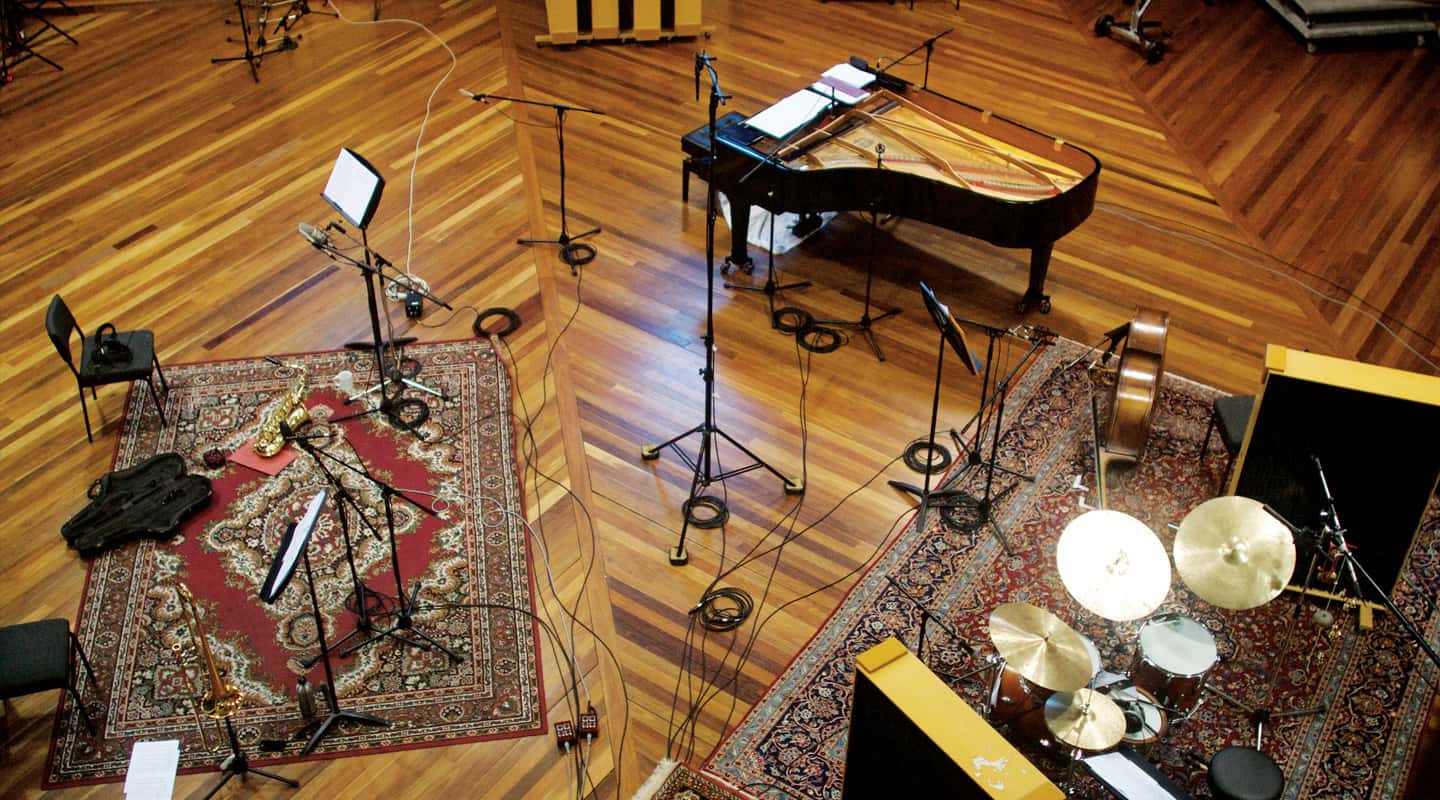
Holding Onto Resolutions
Ultra-high resolution can be more than purist boffinry; it can inspire performance. Greg Simmons and Ross A’Hern discovered this little surprise when recording Ben Gurton’s Euro Jazz album.
Photos: Alan Le & Conan Tran
Having the right stuff to attract a client can amount to any number of things: A body of past work, word-of-mouth references, chance meetings… they might just like the way you dress. But being able to pinpoint the brand of mics and system used to record their favourite album? Priceless.
Ben Gurton, professional trombone player and lecturer at the Australian Institute of Music (AIM), was on the hunt for the right engineer to record an album of Euro Jazz when he sought a fellow lecturer’s advice. Catching up with Greg Simmons (AIM Audio Engineering lecturer and founding AT editor) in the student lounge, Gurton played him a 24-bit/96k version of The Hoff Ensemble’s A Quiet Winter Night. Simmons donned a good pair of headphones and took a listen. When he was done, Gurton asked him if he could make an album that sounded just like it. “Sure,” said Simmons. “But you’d need DPA microphones and a Pyramix system recording in DSD or DXD.” Gurton laughed and flipped to the album’s liner notes, which read, “Recorded with DPA microphones and Pyramix DXD.”
BUILDING THE PYRAMIX
The next step was attaining a Pyramix system, which aren’t in as ready supply as the average ProTools rig. When the first option fell through, they got in contact with Ross A’Hern, which was a bit of a double-whammy. Not only did he own a 24-channel Pyramix system, but he’s also one of the pre-eminent jazz recording engineers in the country. The team was really starting to take shape. Next: finding somewhere to record.
Gurton had written a lot of the pieces for Prelude To A Scene with a specific reverb in mind. Namely, the rich, long reverb of Australian Hall at AIM. “Music that would work in it would have to be of a slower tempo and also the dynamics/volume of the music needed to be relatively soft,” said Gurton.
But as it turned out, he couldn’t get access to the hall anyway, and had to look for a second option. “The reverb was fantastic,” said Gurton. “I would have loved to record there — maybe next time. I spent a few weeks trying to find a completely silent church with a Steinway; it seems they don’t exist!” After a tour of the sanctuaries, he ended up at Studios 301 in Sydney. It fulfilled the requirements for rich reverb, just a tad drier, and also had a grand piano that scored the tick of approval from the album’s pianist Brendan St Ledger. Gurton was sold.

THE PRICE OF INSPIRATION
The album was tracked using the ultra-high resolution DXD format at 24-bit/352.8k, which is a high-resolution version of PCM, and a close approximation of DSD without the processing hassles (see Downstream From PCM sidebar). It was all recorded through the preamps on A’Hern’s 24-channel Merging Technologies’ Horus interface, which sat on top of the formidable Neve 88R console at 301 — itself relegated to an enormous monitor controller and headphone system.
Opting for the higher resolution offered by DXD was more than simply an exercise in technological purists patting themselves on the back. What became obvious to Simmons, was the positive affect higher fidelity had on the players. The impact on the recording experience was undeniable, even for a bunch of old-hand session musicians who’ve heard it all.
Simmons: “The very high resolution sound offered an unexpected surprise: The motivation it gave the musicians every time they came into the control room to listen. The quality and ‘reality’ of the sound was a regular talking point among them. It raises an interesting question: regardless of whether there is enough demand in the market to justify investing in such high-resolution technology, what price will you pay for inspired and motivated performances?
“It doesn’t matter if the recording is played back on a high resolution format or not; an inspired performance is an inspired performance. You can have that on a wax cylinder! The trick is creating an inspired performance in the first place.”
Gurton concurred: “When the musicians came into the control room to listen to takes they were universally very happy with the sound. To their ears, the captured sound was what they hear from their own instruments acoustically day in, day out; year in, year out. We weren’t looking to record hyper-realism, we were merely trying to capture everything that happened in that space at that moment.
“The difference between standard resolution and DXD became very obvious in the mixing stage at Ross A’Hern’s Chapel Of Sound studio. Ross had set up an option to listen to a down-sampled 44.1k stream on his desktop monitor send. We referenced this throughout the mixing process. The difference was quite amazing; the soundstage collapsed in and the instruments became less tangible in their presence. I found it especially noticeable in the cymbal decay and top end of the piano.”
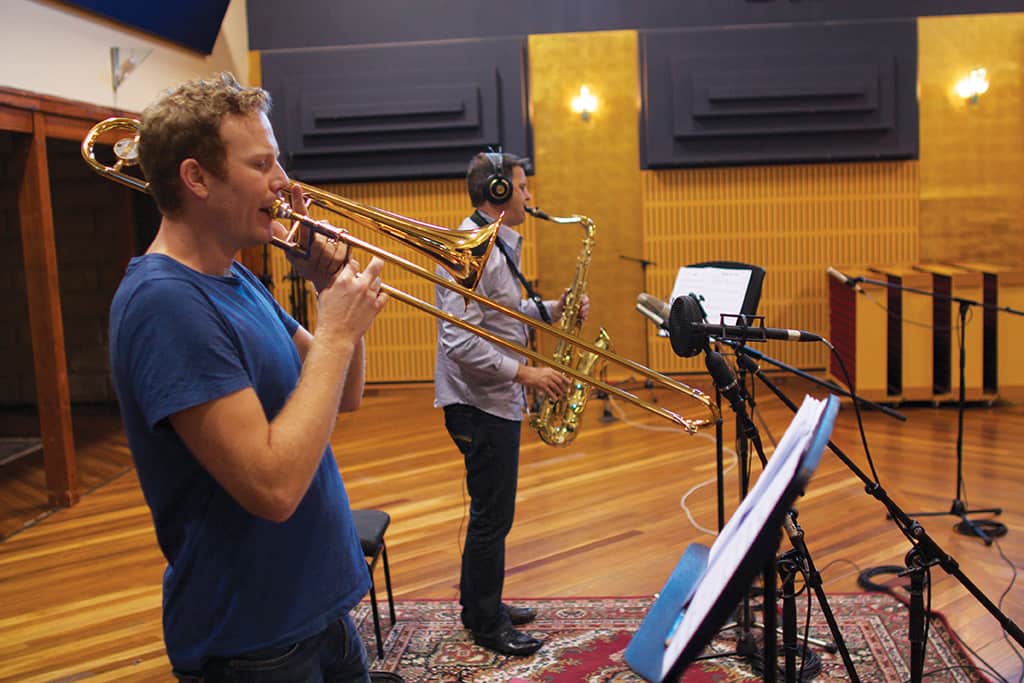
TEXTBOOK PERFECTION
With ‘reverb’ and ‘honest capture’ the catch-cries of the session, room mic choice was a big consideration. Simmons opted for a pair of spaced DPA 4006TL omni microphones fitted with nose cones (a DPA option for the mic), placed high and between the five musicians. He chose an omni polar pattern because he wanted to retain all the low frequency information in the ambience; the 4006TLs with nose cones fitted are almost textbook perfect omnis throughout their frequency response and at any distance. Directional mics, on the other hand, typically start to roll off the low end response at distances more than 30cm from the source.
The compositions also demanded more focus on the reverb than the sound stage. “If I’m trying to capture a small ensemble such as a string quartet — where there are only a handful of sound sources to spread across the stereo soundstage — I’ll use a coincident pair such as MS or Blumlein, because those techniques excel at pinpoint imaging,” explained Simmons. “But when I’m trying to capture the feeling of the space itself, I’ll go for spaced omnis every time; the subtle low frequency phase differences between the channels creates a sense of immersion within the space.”
It also afforded Simmons the ability to place the musicians so they had direct sight lines, but still create the stereo impression of a jazz band playing in front of you. “A spaced pair of omnis has no front or rear side, which means you can place an ensemble on either side of the pair and get a stereo image,” said Simmons. “So we placed the piano, drums and bass on one side of the spaced pair, and placed the trombone and sax on the other side but a bit closer. To the listener, the effects is as if the ensemble is playing live with the piano, bass and drums forming the backline, and the trombone and sax standing in front.”
DPA, ALL THE WAY
“I’m a big fan of DPA microphones because they’re very clean, very clear and very accurate,” said Simmons. “They have an excellent off-axis response, which means they maintain their polar response across a wide bandwidth. Most mics are true to their polar response at 1kHz but not at other frequencies, so sounds arriving off-axis don’t have the same tonality as those arriving on-axis — they’re usually duller. That makes the captured sound appear to be roomier and perhaps even muddier. DPAs don’t do that due to their excellent off-axis response; it’s one of things you pay bigger money for when buying good microphones.”
He isn’t a complete snob though, occasionally you’ll catch him ‘schlepping’ it with the likes of Neumann and Coles. On trombone he paired a DPA 4011 cardioid with a Coles 4038 ribbon to get a tonal blend, while the saxophone didn’t have a DPA on it at all — opting for a blend of Neumann M149 in cardioid and a Royer 122 active ribbon. Blending the two different microphone flavours on each instrument helped achieve unique tone blends without any EQ.
We weren’t looking to record hyper-realism, we were merely trying to capture everything that happened in that space at that moment
NEVE HEADPHONE MIXER
Simmons collected a variety of open back headphones to run out of the gargantuan Neve headphone mixer. Jazz musicians will often record as an ensemble without headphones. Simmons still wanted the musicians to primarily hear the sound of the space — which would bleed through the open-back cans — reinforced for extra focus with a mix of close mics when required. While not for everyone, it had its advantages for Hamish on drums. “As soon as he put the headphones on, he could hear Brendan on bass a lot better and the whole rhythm section snapped in,” said Simmons. “And towards the end, Julian, the sax player started wearing headphones as well. When saxophonists play, they tend to swing backwards and forwards more than a lot of other instruments, so being on mic is quite important. Once he started wearing headphones, he was able to keep his own distance under control.”
ALL IN THE BALANCE
At the end of the 301 session, Simmons rigged up a ‘reamping’ system for the horns. He had a suspicion their directionality hadn’t excited the ambience in the room mics as much as the drums and piano, especially on a few key tom sections. So he wanted to capture a replay of each from their position in the soundstage. The idea was sound, but in the mix, A’Hern’s TC Electronic reverb made it easier to achieve the ambience Gurton was after.
“We used very little processing in the mix,” said A’Hern. “And there was no processing used on the recording at all: Mics straight to Pyramix via Merging Technology’s Horus I/O. For mixing, I sent analogue auxiliary feeds to my TC Electronic 6000 reverb (running at a relatively low-res 96k) and back again, for a small amount of extra reverb, but other than that, there was little if any processing used on the tracks. We did EQ the room mics a bit (a dip at around 300Hz) to reduce the resonant frequency of Studios 301’s main room, and added a little bottom to the Neumann U47 FET kick spot mic, but that was about all.”
There wasn’t much processing going on, but critical to the mix, as always, was a good balance. For Simmons, A’Hern and Gurton, balancing such high resolution recordings was an eyeopener. Simmons: “We were talking about changing levels between instruments of 0.25 of a dB. And the three of us were agreeing unanimously — it was quite clear. It wasn’t about moving a single fader by that much and hearing the difference. It was things like balancing the two trombone mics — a quarter of a dB difference between them made a big difference to the tone. A lot of the parts are played in unison by two players, and you could also hear a big difference in a quarter of a dB when balancing the trombone up against the sax.
“People will probably laugh about 0.25dB difference, ‘As if! I’d like to do a blind test on that.’ Well all I can say is, there were three of us there making very clear decisions as to which one was better…”
Prelude To A Scene will be available from www.bengurton.com


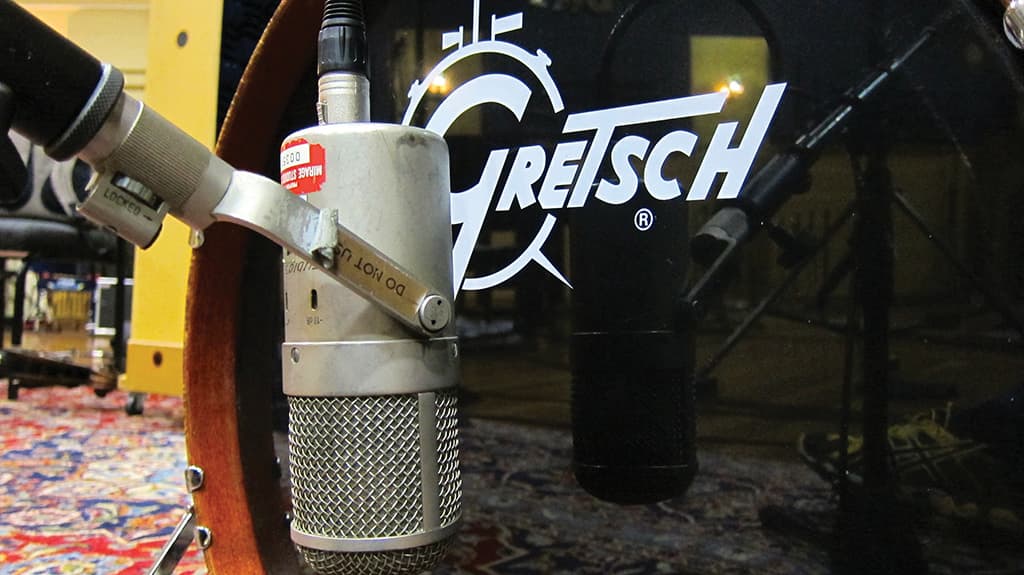

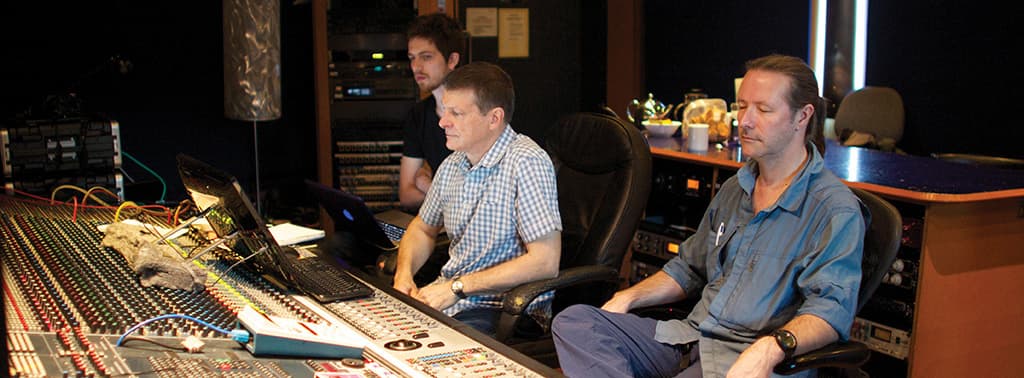










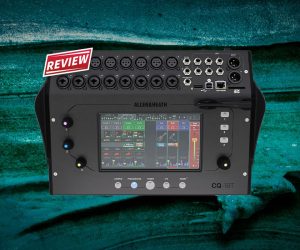




[…] Check out a great story on the making of the album was published in Audio Technology magazine: http://www.audiotechnology.com/site/index.php/holding-onto-resolutions/ Available in full hi-res options at: Klicktrack store http://shop.klicktrack.com/427374 […]